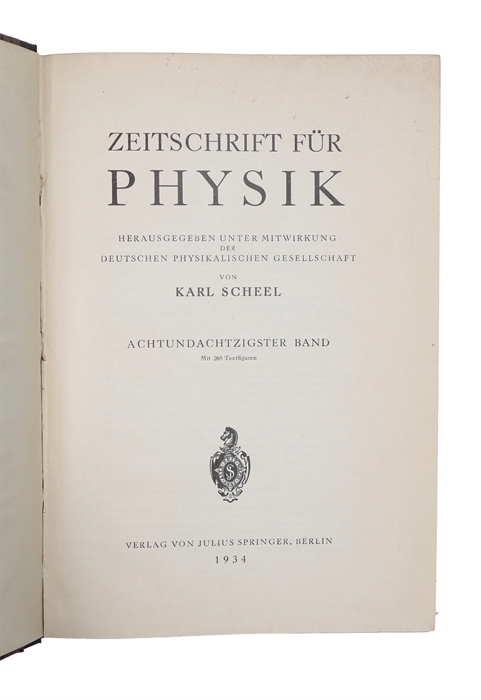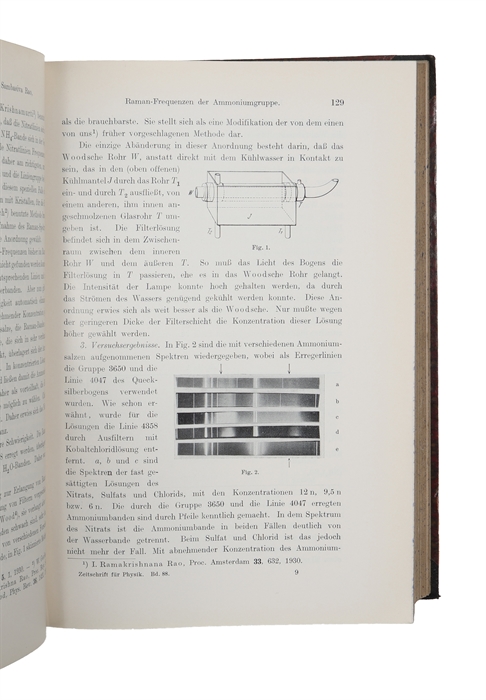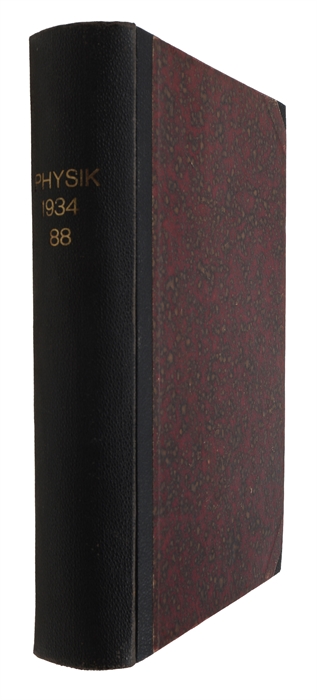THE DISCOVERY BETA-DECAY AND THE NEUTRINO.
FERMI, E. (ENRICO).
Versuche einer Theorie der Beta-Strahlen.
Berlin, Julius Springer, 1934.
8vo. Bound in nice half calf with gilt lettering to spine. Published in "Zeitschrift für Physik". Pp. 161-177. [Entire volume: VIII, 825 pp]. Library stamp to free front end-paper. Clean and fine.
First edition of Fermi's seminal and exceedingly important paper on beta-decay. In one stroke, Fermi had solved the major problem of beta decay: How do electrons come out of the nucleus if there are non to begin with? In the paper he coined the term neutrino and his groundbreaking work awarded him the Nobel Prize in physics in 1938.
How pioneering and daring Fermi's theory was became clear when he first submitted his paper to the prestigious journal Nature. The journal's editor turned it down because "it contained speculations which were too remote from reality", consequently it became published in Zeitschrift für Physik. Eventually six years later, in 1939, Nature published Fermi's paper.
In late 1933 Fermi wrote his famous article offering an elegant solution to a well know problem: Fermi proposed an entire new force of nature, the weak force. "This new force, together with gravity, electromagnetism, and the strong interaction which binds the particles of the nucleus, constitutes the family of forces presently known in physics. The should account for the whole universe. Weak interactions [forces] occur between all particles and are thus unlike electromagnetism or strong interactions, which are restricted to certain particles. The first manifestation of the weak interaction to be treated in detail was the beta decay." (DSB, IV, p. 579b).
The "canonical formalism of Heisenberg and Pauli gave rise, in the thirties and forties, to many applications of which the most important may be mentioned here: 1934 Enrico Fermi gave the formal explanation of beta-radioactivity of atomic nuclei by making use of the hypothesis formulated by Pauli in 1930 which postulated the existence." (Enz, Charles. Of Matter And Spirit, 2009, p. 167).
Pauli had named his proposed light particle a neutron. James Chadwick had named his much more massive nuclear particle a neutron as well which left the two particles with the same name. Fermi therefore, to solve the confusion, coined the term neutrino (Italian diminutive of neutron).
Fermi is widely regarded as one of the leading scientists of the 20th century, Along with Oppenheimer he is frequently referred to as "the father of the atomic bomb".
Order-nr.: 43033



